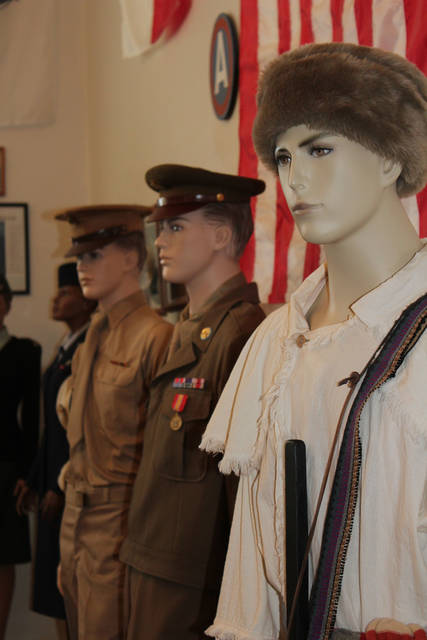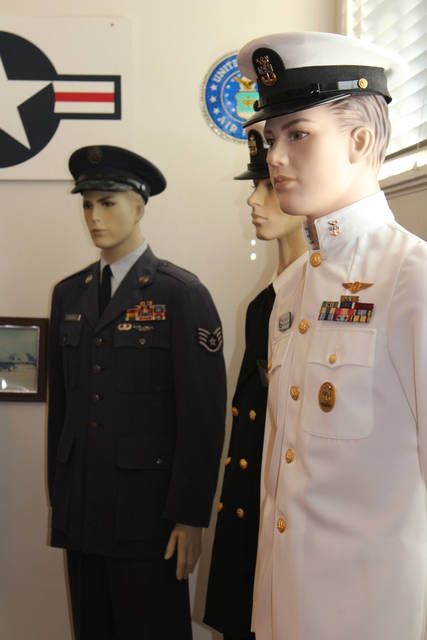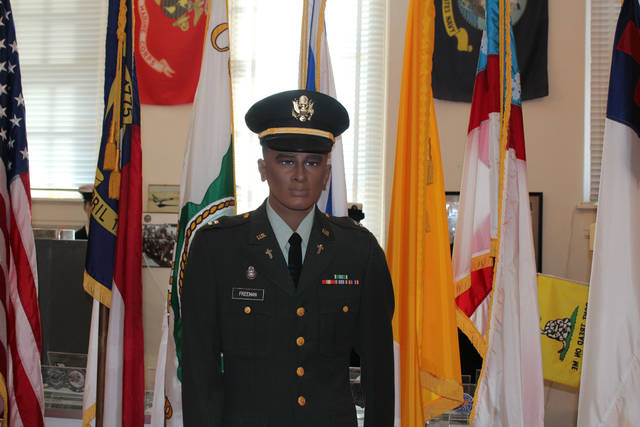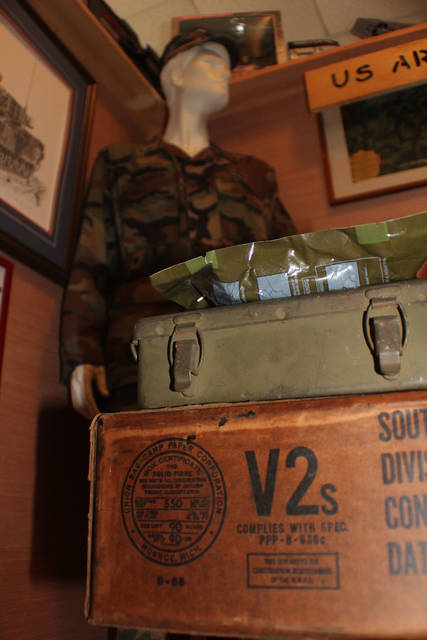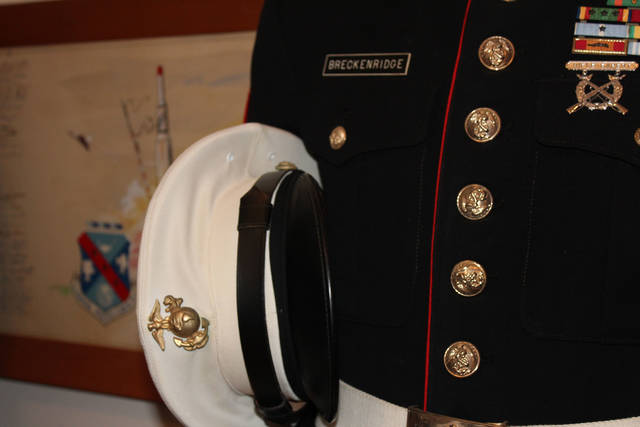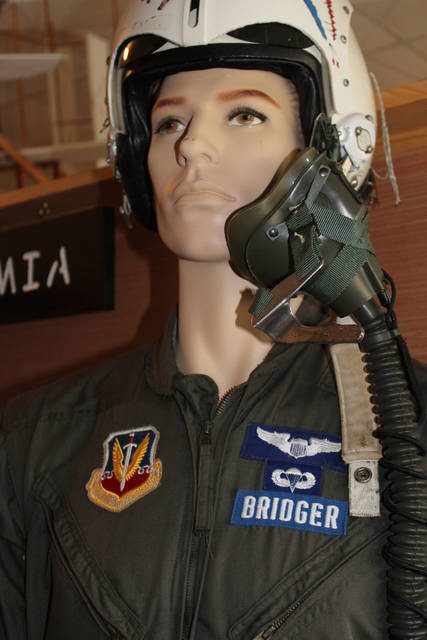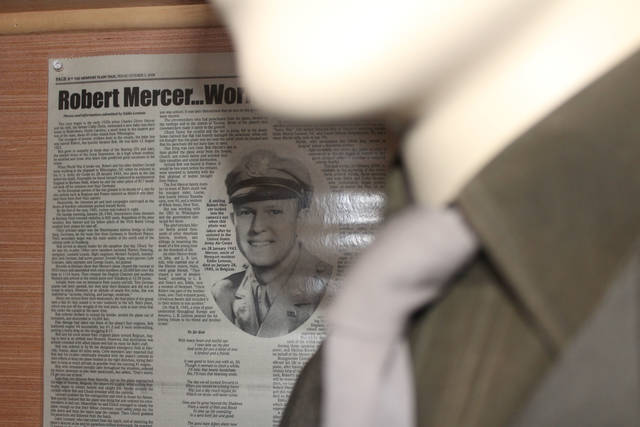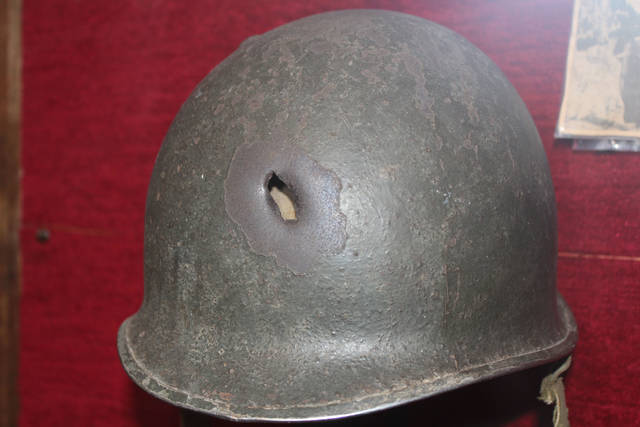BLADENBORO — C.S. Lewis spoke philosophically about worlds in which the inside was bigger than the outside. If such a thing exists in Bladen County, it’s in Bladenboro.
In 1997, several Bladen County military veterans began envisioning a place to pay homage to those men and women from The Mother County who had served in the armed forces. When Col. Earl E. Frink donated seed money to get it started, the Earl E. Frink Military Museum was born.
Housed in the Historical Society building in Bladenboro — which is celebrating its 100th year of existence in 2017, starting originally as a the Farm Life School in 1917 — are 26 mannequins dressed in military attire from every branch of the armed forces from the War for Independence forward. A World War II nurse, an army chaplain, a Vietnam-era Air Force dress uniform, and a Revolutionary War foot soldier’s uniform are just a few of the articles on display in the front room.
Bobby Ludlum, who himself invested 31 years in the Air Force, has been with the museum since its opening almost 20 years ago and recently gave a tour of the artifacts.
“The shoes are the hardest thing to come by,” he said. “Everything in here except the Revolutionary War attire — that is a replica made by someone in Bladen County — was worn by people from Bladen County who served in the military.”
Many of the uniforms bear name tags or citation, service, and indicator bars of Bladen men and women who originally wore them.
In the second room, around the edge of the wall are guns — lots of guns. Ranging from palm-size pistols to 12-inch or more flintlock pistols, some of the weapons are made of wood and some of metal. Included among the weaponry is a four-barrel pistol with two triggers. Depressing the first trigger halfway would release one bullet; pulling it back completely the second bullet; and likewise for the second trigger. A separate case contains shotguns going back to the Revolutionary War, as well as a Confederate pistol that was one of only 1,500 made in France.
“The thing that makes this museum unique — aside from what we have — is that it’s available to the public for free to come and learn something,” museum curator James Lane remarked.
The overseers are currently in the process of setting up a Marine display but are having trouble finding Marine attire.
“We’re at the point that we’ll take any Marine combat uniform from any era,” he said. “If somebody has one, we’d love to put it in the museum.”
In the middle of the room stand partitions, each dedicated to a particular person or branch of the military or war. One depicts a Vietnam War tunnel rat, an American soldier who would go into the tunnels in which the Vietcong lived. Another shows the supplies and rations held by a typical soldier in the army.
At one scene, Ludlum stopped short.
“This is the pride of Bladen County,” he commented, pointing at a name tag bearing the letters “M-E-R-C-E-R.”
In 1945, as World War II was slowly grinding to a halt, nations like Belgium and France were being freed from their Nazi captors. Bladen County native Bob Mercer, Air Force pilot, was stationed with the 95th Bomb Group in southeastern England.
On Jan. 28, 1945, as Mercer and his fellow B17 pilots were on a bombing mission to Germany and about one minute from their destination, Mercer’s plane — just off the wingtip of the lead plane — was hit by flak. With three of the four engines crippled, Mercer left formation, descended, and aimed the plane toward France.
Less than 10 minutes from their destination, having told his crewman, “Don’t worry, I’ll get you out of here,” Mercer began wrestling with the controls as the plane’s only remaining engine caught fire. Ordering his crew members to bail out, Mercer would be the last to leave the plane.
Eyewitnesses, including the crew parachuting to the ground, watched in horror as the flaming plane with Mercer still seated in the cockpit headed for Turnai’s church, adjacent school, and a row of houses. Just when it seemed certain the craft would impact the structures, at the last possible moment, it veered sharply to the left and crashed into a garden.
In 2008, Mercer was honored in Turnai with a monument to commemorate that he “courageously offered his life to prevent (Turnai) citizens from being hurt by his plane, after having risked his life to fight for freedom.”
“That’s my hero,” said Ludlum. “He gave his life not for friends but for strangers.”
C.S. Lewis would call that a “world within a world.”
Chrysta Carroll can be reached by calling 910-862-4163.
